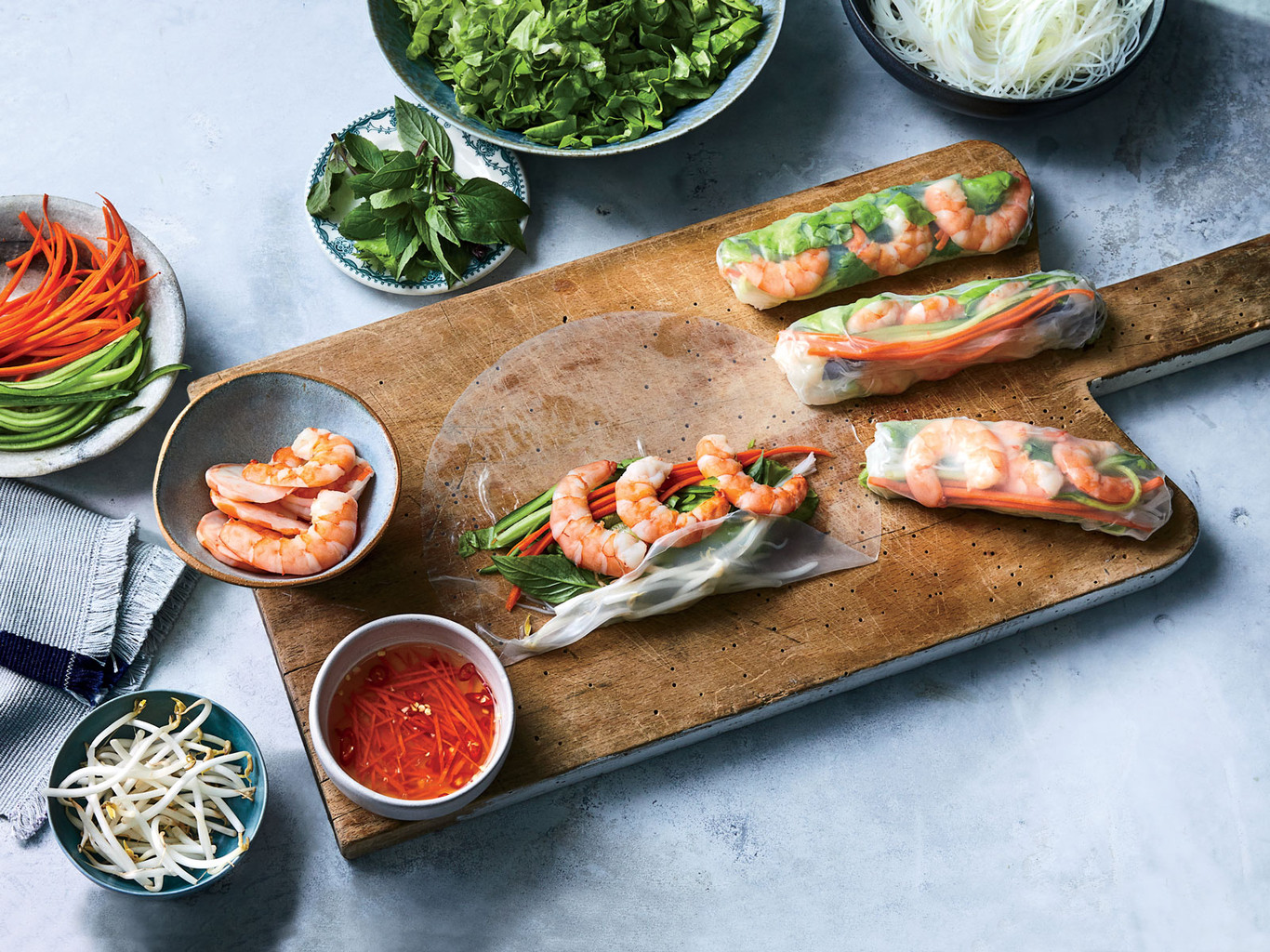In our latest F&W Cooks video, Andrea Nguyen reminisces about making rice paper rolls with her family while she was growing up—everyone would compete to make the best-looking rolls and show superior technique. Now, she’s imparting that wisdom with viewers to give a step-by-step guide for making rolls of your own. Throughout the quick clip, she explains the optimal way to prepare fillings and avoid punctured paper; she also provides a helpful tip for wetting your rice paper without over-soaking it, which makes it difficult to work with. Once you’ve mastered the technique, Nguyen suggests making a social event out of it, whether you invite friends over for a roll-your-own party or share it with kids. Curious? Check out her main tips below.
First thing’s first—fillings
This guide is intended to be a roadmap, which you can later use to swap in fillings of your choice. (E.g. shrimp for pork, or carrots and cucumbers for sautéed shiitake mushroom caps.) However, whatever goes inside needs to be thin and soft, so the filling won’t puncture the rice paper. In this instance, Nguyen uses English cucumber, pressed tofu, carrots, baby greens, herbs, and shrimp.
De-seed the cucumbers
Nguyen likes to use an English cucumber because you don’t have to peel it. She takes a teaspoon to quickly get the seeds out—from there, she cuts it into thin slices, aiming for an eighth-of-an-inch thickness.
Stick with pressed tofu
For protein, Nguyen opts to add tofu. She uses pressed tofu because it’s incredibly firm, and perfect for rice paper rolls because it can be sliced paper-thin.
Slice your shrimp in half
Cooked shrimp is pretty popular in rice paper rolls; however, large shrimp is too thick to fit in the roll. So Nguyen shows a Vietnamese technique of placing the shrimp on their sides and cutting them horizontally into two thin slices, using her fingers as a guide. This also helps you make the most out of your shrimp and feed more people.
Keep your ingredients organized
As you prep the filling, Nguyen suggests keeping it all in one bowl and setting it aside.
Use this rice paper…
Rice paper used to be made with just rice, water, and some salt, she explains, and it took forever to soften. Now, Nguyen says modern brands include a little tapioca in the paper. She prefers Three Daughters, which you can order online, or find at Asian markets—even Cost Plus World Market.
…and don’t let it sit in the water
Nguyen sets up a shallow bowl (at least as wide as the paper, if not wider) with “bathtub warm” water in it so she can wet the rice paper rolls. Her recommended technique is to slide it in and rotate it quickly—if it over-soaks, it won’t behave well, she explains.
The smooth side goes down
The rice paper rolls have a smooth side and a rough side. Nguyen places the smooth side down on the workspace, and then lets it sit until it gets tacky and “puckery.”
Photo: McCormick
Start with greens
Nguyen uses soft baby greens, which bend easily, and then adds cucumber sticks and carrots on top. After that, she adds basil and mint, along with the tofu. It’s all compartmentalized on the lower portion of the roll—it may look like a lot, but once you roll, it starts to get compressed.
Roll, peekaboo, then roll again
Nguyen folds over the rolls once, then adds some shrimp on top, which she says is a “peekaboo” trick. Finally, she rolls everything over once more and seals it all up.
Enjoy
Nguyen serves the rolls with a Nuoc Cham sauce.
This article was written by Bridget Hallinan from Food & Wine and was legally licensed through the NewsCred publisher network. Please direct all licensing questions to legal@newscred.com.







